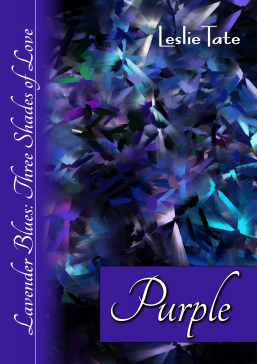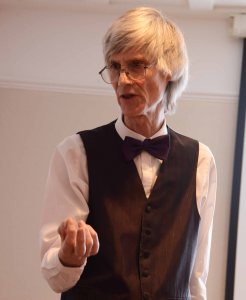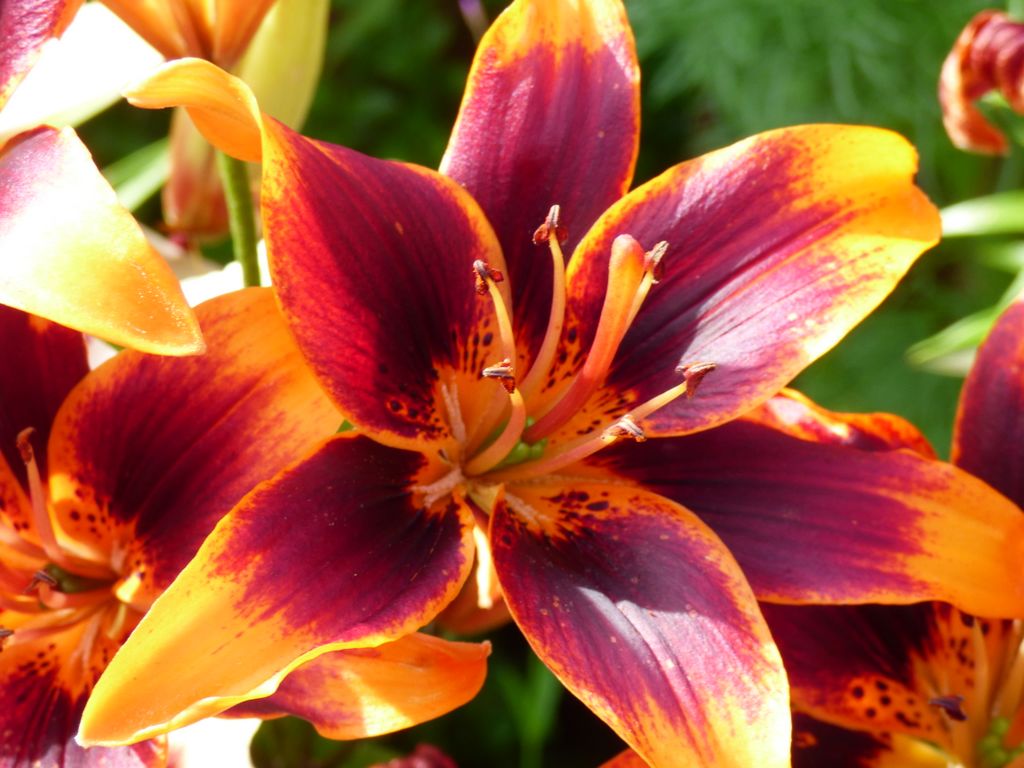
I’m delighted to welcome Leslie Tate to Linda’s Book Bag today. Leslie is introducing Blue, the second in his Lavender Blues: Three Shades of Love, trilogy. Blue is published today, 1st November 2016, and is available for purchase directly from Leslie by clicking here and from your local Amazon site.
Purple
Purple, the first book in the Lavender Blues: Three Shades of Love trilogy is available here.

Purple is a coming-of-age novel, a portrait of modern love and a family saga. Set in the North of England, it follows the story of shy ingénue Matthew Lavender living through the wildness of the 60s and his grandmother Mary, born into a traditional working-class family. Both are innocents who have to learn more about long-term love and commitment, earning their independence through a series of revealing and closely-observed relationships.
Heaven’s Rage
Leslie also has a wonderful collection of lyrical essays, Heaven’s Rage, coming out on December 1st 2016. You can message him from his website if you want more details, but I have been lucky enough to review part of that collection below. Heaven’s Rage is an imaginative autobiography. Reporting on feelings people don’t usually own up to, Leslie Tate explores addiction, cross-dressing and the hidden sides of families. Writing lyrically, he brings together stories of bullying, childhood dreams, thwarted creativity and late-life illness, discovering at their core the transformative power of words to rewire the brain and reconnect with life. A Robin Red breast in a Cage / Puts all Heaven in a Rage – William Blake.
You can pre-order Heaven’s Rage here.
And Then There Was Blue
A Guest Post by Leslie Tate

Blue, the second in the Lavender Blues trilogy, was based on my experiences in the 80s as a member of a feminist-led collective – but shaped and adapted to fit the logic of fiction. The words and the characters were my main guide, taking me to places I hadn’t expected. The themes were feminism, marriage and open relationships, but only as they developed in their own sweet way. What I had to establish was the ebb and flow of feelings as an authentic experience, and this meant that the beginning was seminal. Like the first few bars in a symphony, the opening paragraph signposted the key, tempo and mood.
So what did I hear at the start?
Blue begins with a quiet, observational figure – with moments of unease and the word ‘enough’ running through the mind of my protagonist, Richard Lavender. By contrast, my second subject, his wife Vanessa, sails in noisily with a messy exchange with her children and her close friend Ruth. Then the narrative voice kicks in, taking us back through the first ten years of Richard and Vanessa’s relationship. The emerging pattern is: intro – smooth exposition – back to theme, using the word ‘enough’ as leitmotif.
With Blue I’d already decided that I wanted to explore a different type of beginning from my first novel. In Purple the reader is transported by the first sentence back to the 60s. With Blue the process is more close-up and gradual, showing Richard and Vanessa living in the 90s – flashing back to the 80s – with less overview. So it’s a controlled outing, a walk in the park if you like, with enough time to look around. The reader is taken into the lives of the warring couple through pacing and changes in voice. And because I wanted to fully explore the action, each incident has an element of arrest, a tableau-like dimension, as it extends itself, stretching time and space. Of course I also had to move the story on. So I repeatedly rewrote the start to each chapter, searching for shortcuts, ways of jumping through time and space without sounding false. And in that search I found that a ‘go for it’ mind-set helped. Anything was possible as long as I wrote with freedom and didn’t get too hemmed in by ‘writing school’ conventions. So my story moved according to feel, switching between characters out there in the world doing surprising things and the dispassionate study of a couple beneath the microscope.
To write Blue I needed a strong, flexible authorial voice. Rereading my first attempts I identified a register – a combination of formal and informal, in third person, dipping in and out of my two main characters’ heads – so my first draft was composed around a series of variations on that style. But when I revisited the story later, new expressive registers appeared. For instance a new beginning, with Richard’s cousin Matthew, the main character in Purple and now a professor, lecturing about relationships. His voice was witty and erudite, offering indirect comments on Vanessa and Richard’s marital struggles. It added an element of humour and a connection between the books. Other styles appeared, helping to vary the narrative, including articles, dialogues and programme notes for an exhibition. What I’d put together by the end was a collection of voices, all bearing on the same question: will Vanessa and Richard manage to save their relationship?
To do my subject justice I needed to include a consciousness-raising meeting and a counselling session, contrasting them with romantic getaways – which called for a switch between irony and poetic prose. With the counselling I had to ‘pack it in’, foreshortening hours of talk into a few concentrated exchanges before moving on to practical, slightly wacky exercises. A counselling scene could be very static, so I squeezed several sessions into one, making it possible for Richard and Vanessa to achieve tangible progress. As an author I often overlay the actual with the generic, striking a balance between the documentary and the imaginary. The process, as Susan Sontag says, makes the writer: ‘Love words, agonize over sentences. And pay attention to the world.’
In the world I’d belonged to, the feminist-led group had set out to overturn monogamy, but jealousy got the better of us. So in the book the open relationships have similar problems, but not before Richard and his ‘secondary partner’ Ginny have a wild love affair. Their romance is told largely in terms of crazy night walks in forgotten parts of the city. The normal rules don’t apply in the darkness of the park or the abandoned railway line, but the relationship does follow the well-established pattern that romantic love can be a fleeting thing.
So Blue tells a quasi-historical tale, but in the form of a satirical-romantic-adventure. It covers that time in life when couples struggle to ‘stay alive’ against the pressures of jobs and bringing up children. It’s also an investigation into modern love.
In the words of my blurb: ‘Blue tells the story of Richard and Vanessa Lavender, who join a 90s feminist collective sharing childcare, political activism and open relationships. Boosted by their ‘wider network’ they take secondary partners, throw parties and observe the dance of relationships amongst their friends. But finding a balance between power and restraint, and handling shared love, proves difficult…’
My Review of Cross-Dressing from Heaven’s Rage
How Leslie began cross-dressing and the impact on his life is explored in this essay.
My goodness this is such good writing. What Leslie Tate does is lay himself emotionally open and honest in a manner that cannot fail to touch the heart of the reader in his autobiographical writing.
If I’m honest, I’m not usually especially interested in autobiographical writing, but Leslie Tate has inspired me to read more if it is to be of this quality. Heaven’s Rage and the chapter I read, Cross-Dressing, is raw, beautifully written and utterly compelling reading. When I’d finished reading Cross-Dressing I wanted to reach out my arms to Leslie Tate and hold him close.
Anyone who has struggled with their sexual and personal identity will find so much that resonates here and for those of us who have always been conventional, Leslie Tate illustrates what others have had to contend with. That’s not to say that this is a sympathy requesting piece. Far from it. It is a true, moving and fascinating account of how Leslie began cross-dressing and how he was viewed, and viewed himself, as a result. It explores the way the media treats those who appear other, the way society expects certain norms for acceptance and how hard so many of us find it to be easy in our own skin.
What I enjoyed most about this piece was the eloquence of the writing. Leslie Tate has a beautiful turn of phrase that conveys perfectly the emotions of the moment. He presented me with concepts that had never really reached my consciousness and made me think in a manner I found hugely skilful.
No matter what your own personal viewpoint and perspective, Cross-Dressing cannot fail to move and impress the reader. It’s magnificent.
About Leslie Tate

Leslie wrote his Lavender Blues trilogy while attending a University of East Anglia Creative Writing Course. He is a novelist, poet and teacher, with an MA in Creative Writing, whose stories are driven by language and character. Leslie admires Virginia Woolf, James Joyce, Carol Shields, Marilynne Robinson and Michael Ondaatje.
He runs mixed-arts shows, a poetry reading group and a comedy club, and has led writing workshops at universities, libraries and festivals. He uses music and art as part of his performances which offer surprising insights into prose and how authors ‘reread the world’. He often performs with his wife, author Sue Hampton. Calling themselves ‘Authors in Love’, they live together in Hertfordshire.
Leslie has been shortlisted for the Bridport, Geoff Stevens and Wivenhoe Poetry Prizes.
To find out more about Leslie Tate, visit his website, find him on Facebook and follow him on Twitter. On Leslie’s website you will also find weekly interviews and guest blogs by writers, artists and musicians, as well as Leslie’s own writings.

Reblogged this on Matthews' Blog.
LikeLike
Lovely to see Leslie’s books featured here, Linda.
LikeLiked by 1 person
Great writing isn’t it?
LikeLike